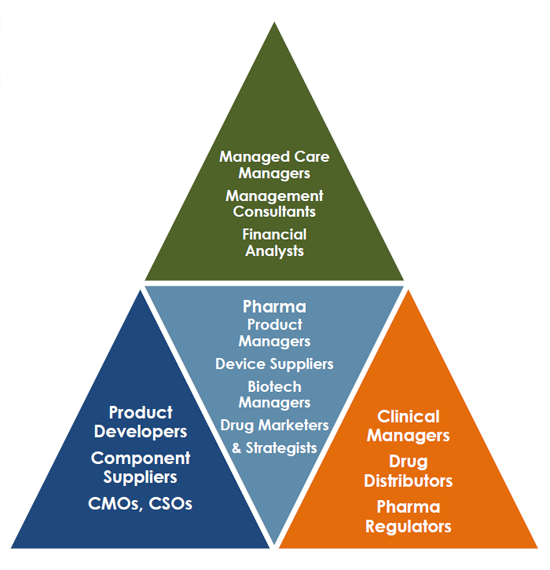PUBLISHER: Greystone Research Associates | PRODUCT CODE: 1718479

PUBLISHER: Greystone Research Associates | PRODUCT CODE: 1718479
Inhaled CNS Therapeutics - Products, Markets, Therapeutics, Strategies & Forecasts
This new market study, "Inhaled CNS Therapeutics: Products, Markets, Strategies, Forecasts, & Targets" is a comprehensive evaluation and analysis of the technology, products and participants providing the driving force behind this growing segment of the drug delivery sector. The report has been designed and developed to provide pharmaceutical company decision makers, drug developers and formulators, drug device designers, and industry strategists with a detailed understanding of the expanding impact of inhaled CNS therapies on pharmaceutical strategies and healthcare treatment protocols. Provider organization business managers, healthcare administrators and investors will also benefit from this publication.
Converging Factors Driving Advances
Delivering drugs to the central nervous system presents unique challenges. But, drug developers and researchers have discovered that delivering CNS therapeutic drugs via inhalation mitigates several of these issues. The accessibility and vascular structure of the nose make it an attractive route for delivering both small molecule drugs and biologics across the blood-brain barrier to the CNS. Pulmonary delivery to the deep lung can have favorable pharmacokinetics. And inhaled delivery offers the potential for faster onset of action and less frequent dosing relative to oral drugs. These potential advantages have spurred activity in inhaled CNS therapeutics for a range of disorders. As aging population demographics and managed care initiatives drive growth in home health care and self-administration of drug therapies, inhaled medicine is increasingly being viewed as patient-friendly and cost-effective. Our analysis indicated that inhaled CNS administration is well positioned to take advantage of these trends and evolve into a significant factor in the future of pharmaceutical development and commercialization of CNS therapeutic drugs.
Report Value Matrix

What You Will Learn:
- What inhalable drugs are supplied in powder form, how are they marketed, what are the device specifics, and who markets them?
- What inhalable dry powder drugs are in late stage development, who are the developers, and what indications are they targeting?
- What are the major factors driving inhaled dry powder drug/device demand?
- What is the size of the market today, who are the market share leaders, and what will the market share be in 2026?
- How important are drug developer-device manufacturer relationships and what are the key alliances in the industry?
- What are the essential design factors, technologies and market development issues for dry powder inhalation products?
- What are the significant economic, technology, and regulatory factors affecting the market for dry powder inhalers?
Methodology:
Research methodology is based on primary research in the form of in-depth interviews with key market participants, technology developers, distributors, industry experts, and market influencers, a list that includes regulatory officials, industry trade groups, and materials standards organizations.
Primary data is evaluated and normalized against secondary sources including trade journal articles, technical literature, industry publications, company data sheets and published information, and statistical data from government agencies and trade associations.
Forecasts and projections of market demand and future market activity are derived using standard modeling and statistical techniques.
Table of Contents
- Executive Summary
- Drug Delivery Market Dynamics
- The Trend toward Self-Administration
- CNS Therapeutic Market Dynamics
- Growth in Home Healthcare
- Market Drivers
- Market Strategies
- Key Inhaled Drug Factors
- Absorption
- Bioavailability
- Device Design Parameters
- Nasal Delivery Pharmacokinetics
- Nasal Device Characteristics
- Pulmonary Delivery Pharmacokinetics
- Pulmonary Device Characteristics
- Dry Film Technology
- Inhaled CNS Drugs: FDA-Approved Products
- Depression
- Esketamine (Spravato); Janssen Pharmaceuticals
- Migraine
- Dihydroergotamine Mesylate
- Sumatriptan (Imitrex)
- Zolmitriptan (Zomig)
- Pain Management
- Butorphanol
- Ketorolac (Sprix)/ Zyla Life Sciences US
- Fentanyl / Lazanda
- Adasuve/Loxapine (Galen / US)
- Seizures
- Diazepam (Valtoco)
- Parkinson's Disease
- Levodopa (Inbrija)
- Seizures
- Nayzilam (Midazolam)
- Inhaled CNS Market Segment Analysis
- Alzheimer's and Dementia
- Depression
- Insomnia
- Migraine
- Pain Management
- Parkinson's Disease
- Schizophrenia
- Seizures
- Market Factors
- FDA Regulations
- Clinical Trials




